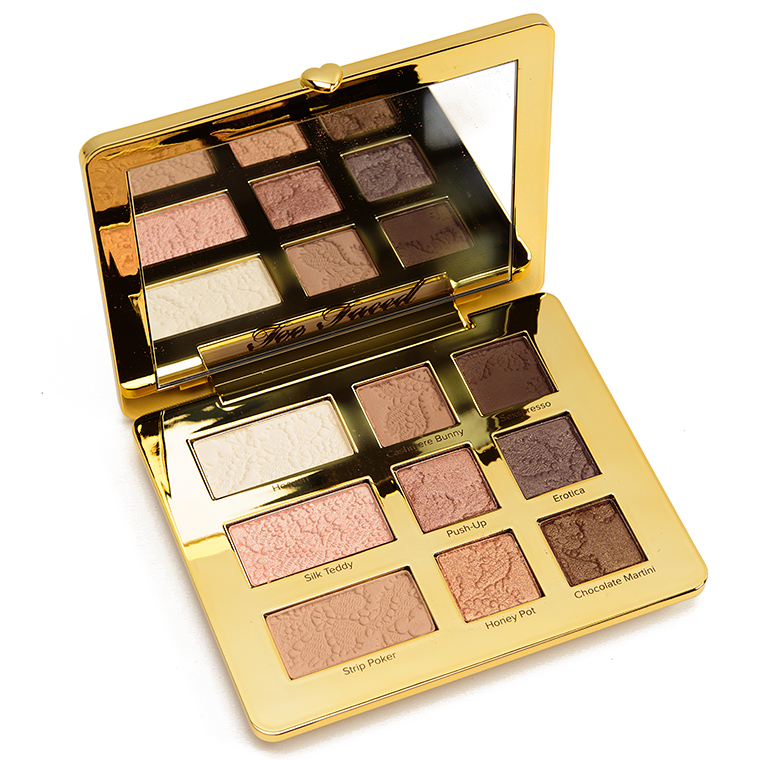Makeup Troubleshooting: My Eyeshadow is Too Powdery!
Powdery eyeshadows are the type that have a lot of excess product that gets kicked up in the pan whenever you go to use it. They’ll often look messier when housed in a palette, so you may feel like you have to wipe away excess to avoid colors mixing. Sometimes, this powderiness results in eyeshadows that sheer out when applied (but not when you want them to!), fallout, and fading faster than normal.
Here are some examples of more soft, more powdery formulations that I’ve tried: Anastasia Eyeshadows (particularly mattes, less so with shimmers), LORAC Eyeshadows (particularly the Pro palettes), Tarte Amazonian Clay Eyeshadows, and Too Faced Eyeshadows.
Some formulas are so soft and silky but they can be very powdery, others are harder and stiffer (we have a guide for these!) but are more buildable. You’ll want to adjust your technique and the order of your application (to some degree). I wouldn’t say one is better than the other because it’s more about your preference and technique.
If you’re someone who is heavy-handed, a softer, more powdery formula will make it easier to build up coverage or to keep from over-applying. If you’re someone who wants a lot of control and precision, harder formulas give you that. Ideally, there’s a balance between softness and intensity so that you can adjust the pressure of your brush or the type of tool you use while not having to be hyper-aware of dealing with powderiness, fallout, or that it’ll take longer to blend out a product.

Prevent Fallout from Powdery Eyeshadows
Apply your eye makeup first, because it’s going to be difficult to completely escape some fallout, especially if you’re working with shades that contrast against your skin tone. Why waste a bunch of time applying your base just to have to touch-up and redo it later? You might consider priming or prepping the skin but leaving complexion products for post-eye makeup if you need some prepping products to absorb and sink in!
Use a softer touch as the powder is more yielding and plenty of product will get on your applicator (brush, sponge-tip applicator, fingertip, whatever) and a firmer touch will just kick up more excess product, which is messy and will waste the product.
>> Check out our in-depth guide on how to blend your eyeshadow here!
Use softer brushes, be careful with fluffy brushes as scratchier brushes can disturb the powder’s surface even more, which will dislodge more product than you’ll need for application; similarly, fluffy brushes tend to flare out more at the tip, which can pick up an excess amount of product and then apply too much with little precision.
Tap off excess prior to applying to the eye area by lighting tapping the ferrule of the brush against your wrist or forearm; there’s no need to whack it against your wrist or the edge of the table, just a light tap is all you need. If you’re using sponge-tipped applicators, this can be useful but the sponge tends to hold the excess powder better.
Prevent Fading from Powdery Eyeshadows
You’ll want to use an eyeshadow primer or base, which can both intensify and increase the longevity of your eyeshadows (in general) but are particularly key when working with softer, sheerer shades that seem to vanish all too quickly! We have an in-depth guide on how to make your eyeshadow last longer here.
You may need to experiment with your primer or base and choose something that’s less dry to avoid emphasizing lid or skin texture. It may also mean that if you normally dust translucent or flesh-toned powder over your base that you’d omit that step to avoid too many drier, powdery layers you have on your skin.

Technique Modifications for Softer Eyeshadows
Be careful using dampened tools or fingertips because more powdery eyeshadows often absorb natural oils and moisture and leave behind hardened surfaces, which will turn your ultra-soft eyeshadow into an eyeshadow brick.
Pat and press the eyeshadow on for better color intensity, which will minimize how much product can get swept or diffused before you’re ready to blend. This will also ensure that there’s a precise lay down of color as more powdery formulas can be harder to control.
Blend with a clean brush or after you’ve already used your brush to apply most of the color, then use the mostly-clean brush to diffuse and blend out edges to minimize fallout, over-blending, and muddying. It also ensures that you don’t over-intensify any particular area, too!
Use a smaller, more precise brush to intensify after blending. If you’re fairly happy with the result you’re getting but want a lid color richer or the crease to be more defined, use a smaller brush to darken just the area you want to minimize having to go back and do additional blending.
Looking for the perfect formula? Check out our favorite eyeshadows and must-have eyeshadow palettes.
from Temptalia https://ift.tt/2MQEjkg
Visit Feminine Well Being blog for interesting articles like this!
Comments
Post a Comment